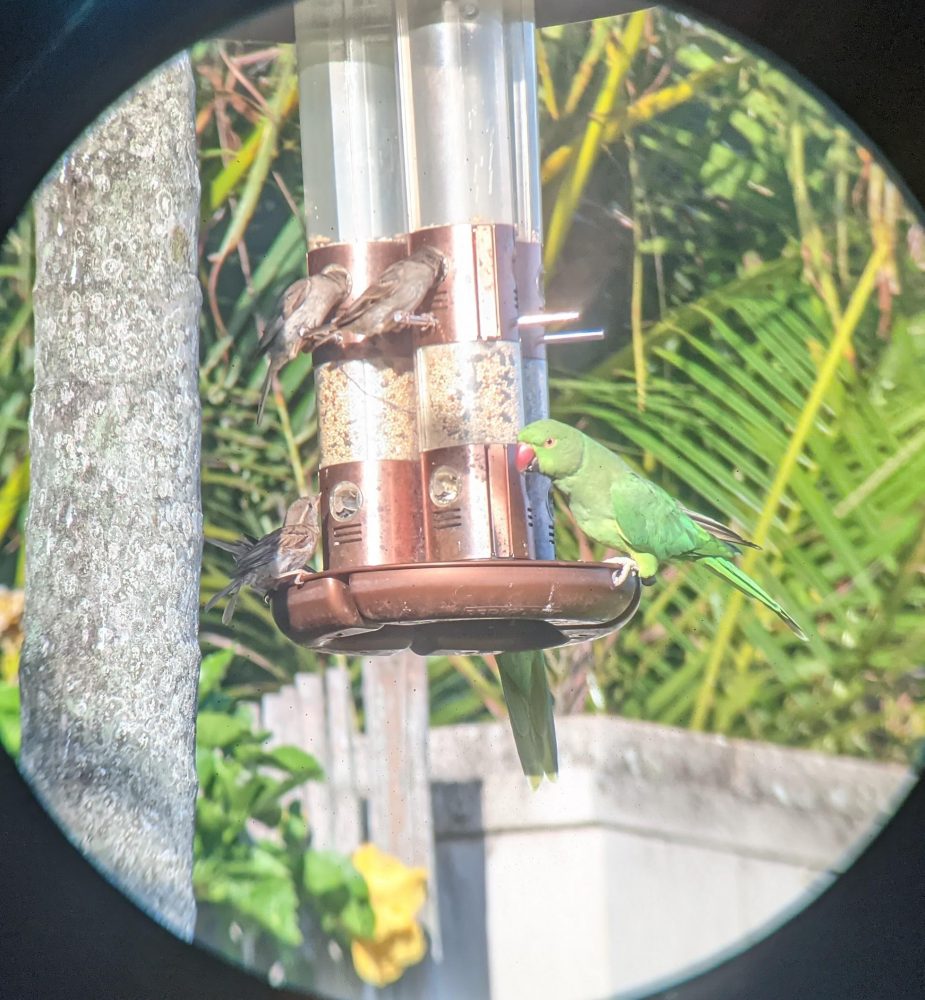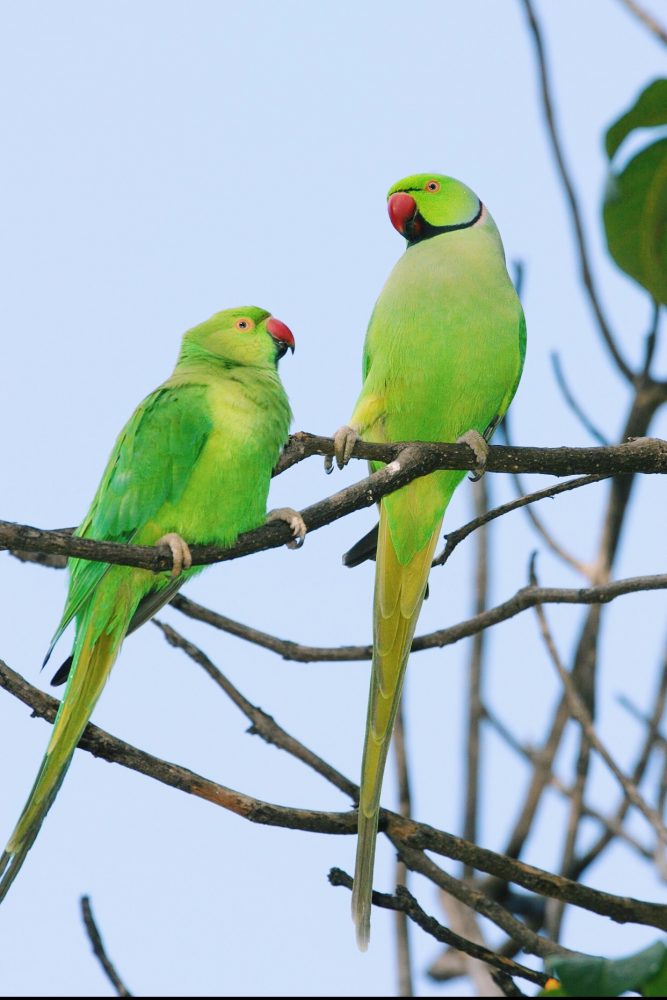In July 2021, a Kīhei resident reported a strange-looking bird near their condo to the State-wide online pest reporting system, 643PEST.org. The concerned citizen knew that was not the rosy-faced lovebird, which is already established on Maui. The next day, a Nāpili resident reported an oversized visitor at their bird feeder. Both reports described lime-green parrot-like birds that were loud – really loud! These citizen reports led to the detection of a small band of rose-ringed parakeets, a species known to be invasive throughout the world.

Parakeets are members of the parrot family, absent from the native fauna in Hawaiʻi. They are one of the most popular bird species in pet trade globally and are transported from their native ranges of Africa and Asia. With the ability to survive a range of climates, rose-ringed parakeets have established wild breeding populations in over 40 countries throughout the globe- ultimately making them one of the most invasive birds species in the world. In the United States, the largest and most problematic population of rose-ringed parakeets roost in Hawaiʻi, resulting in the State of Hawai‘i deeming it illegal to import them as pets.
It is unclear when rose-ringed parakeets arrived in Hawaiʻi. Escaped pet birds have been reported in the wild on Oʻahu since the 1930s, with about 4,700 birds present to date. Reports of rose-ringed parakeets have occurred since the 1980s in locations throughout Hawaiʻi Island; however, not much is known about their current population and distribution. The largest and most problematic population of rose-ringed parakeets are found on Kauaʻi. Recent estimates have the population over 10,000 and counting.

Released in the wild near Lāwaʻi in the 1960s, they have caused hundreds of thousands of dollars of damage to date on fruit and grain crops grown on Kauaʻi. Highly intelligent, wild flocks of rose-ringed parakeets will send scouts to deem if a location is safe, and if so, the movable feast begins like a hoard of tourists on a cruise ship buffet line. Flocks of birds will descend onto fruit trees and strip them bare. What’s left of the harvest may be covered in excrement and no longer viable for sale- bad news for small, local farmers already on tight margins.
It’s not just their appetite that makes them problematic. Their loud, high-pitched calls have been described as “deafening” when roosting at sunset, and the noise is not much better again at sunrise. Large congregations of birds also mean large piles of excrement- often on cars parked under trees. One hotel has even resorted to installing its own car wash to help clean up the nightly mess. The vast volume of feces can also become a potential human health hazard and encourages other invasive species like mice and rodents in the area. The Kauaʻi Invasive Species Committee, partnered with the Rose-ringed Parakeet Working Group, leads the research to determine the best way to manage these invasive pests.
Currently only found in lowland environments near humans, there is a growing concern on what effects they may cause if they reach upland native ecosystems. Potential impacts could be eating native plant seeds and damaging trees, spreading diseases such as avian pox to native forest birds, and impacting Hawaiʻi’s unique biodiversity, thus threatening our watersheds and cultural connections to some of the world’s most unique and threatened ecosystems.
Back on Maui, the rose-ringed parakeet found in Kīhei was captured; however, at the time of this publication, at least four more birds remain at large in West Maui. An interagency effort between the Maui Invasive Species Committee, Hawaiʻi Department of Agriculture, Department of Land and Natural Resources Division of Forestry and Wildlife, Maui Nui Seabird Recovery Project, and Maui Forest Bird Recovery Project has been working to locate and capture these remaining birds to prevent them from becoming established on Maui.
The Maui community can help protect our island’s environment, agriculture, and quality of life by reporting rose-ringed parakeet sightings to www.643pest.org or calling (808) 643-PEST.
Serena Fukushima is the Public Relations and Education Specialist for the Maui Invasive Species Committee. She holds a bachelor’s degree in environmental studies and a graduate degree in education from the University of Hawaiʻi at Manoa. “Kiaʻi Moku, Guarding the Island” is written by the Maui Invasive Species Committee to provide information on protecting the island from invasive plants and animals that threaten our islands’ environment, economy and quality of life
This article was originally published in the Maui News on August 9, 2021 as part of the Kia‘i Moku Column from the Maui Invasive Species Committee.
Read more Kiaʻi Moku articles.


